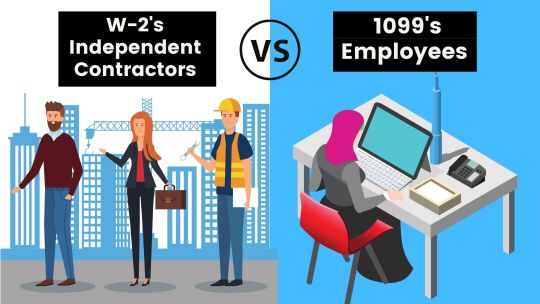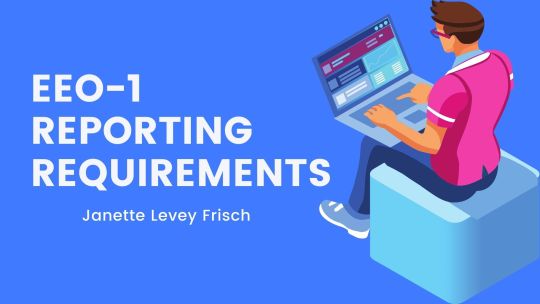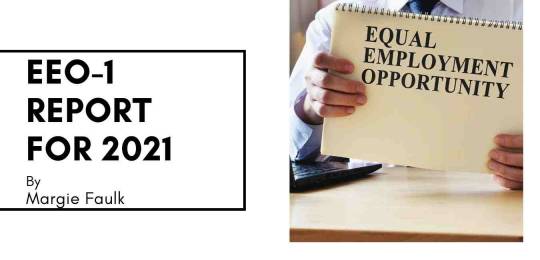SUPREME TRAINER believes that education is a commitment to excellence in Teaching and Learning in USA.
Don't wanna be here? Send us removal request.
Link

Description
On September 9, 2021, President Biden announced a requirement that all federal workers must be vaccinated against COVID-19. The action goes a step further than what Biden announced earlier this summer when federal workers had the option of being tested regularly instead of getting vaccinated. The tightening vaccine requirement for federal workers comes as the Biden administration is stepping up its encouragement of vaccine mandates in the private sector as well. The decision comes as Biden faces pressure to act more forcefully on the pandemic and the spike on the Delta variant across the nation.
Requiring Vaccinations for all Federal Workers and for Millions of Contractors that Do Business with the Federal Government
Building on the President’s announcement in July to strengthen safety requirements for unvaccinated federal workers, the President has signed an Executive Order to take those actions a step further and require all federal executive branch workers to be vaccinated. The President also signed an Executive Order directing that this standard be extended to employees of contractors that do business with the federal government.
Requiring All Employers with 100+ Employees to Ensure their Workers are Vaccinated or Tested Weekly
The Department of Labor’s Occupational Safety and Health Administration (OSHA) is developing a rule that will require all employers with 100 or more employees to ensure their workforce is fully vaccinated or require any workers who remain unvaccinated to produce a negative test result on at least a weekly basis before coming to work. OSHA will issue an Emergency Temporary Standard (ETS) to implement this requirement. This requirement will impact over 80 million workers in private sector businesses with 100+ employees.
SESSION HIGHLIGHTS:
Learn what the reason is for these new vaccine mandates
What happens if employees refuse to follow the mandates
What is the 6 prong approach for managing the increase in the Delta Variant?
How will the Department of Labor (DOL)/OSHA implement the mandate for private employers with 100 employees?
How will the Office of Federal Contract Compliance Programs (OFCCP) manage the vaccine mandates for federal contractors and subcontractors
#vaccination#dol#osha#ofccp#compliance#labor#ets#live training#live webinar#compliance professionals
0 notes
Link

Description
COVID-19 vaccines are giving many employers hope that their workplaces can slowly return to normal. To help speed that return, employers are considering requiring or encouraging workers to get vaccinated. That’s allowed within certain limits, but there are employee relations hurdles and legal challenges in mandating or incentivizing vaccines that employers need to be aware of.
Before employers jump to requiring employees to get vaccinated, they should understand all the possible effects of that decision – both operational and cultural. As an example, if an employer makes COVID-19 vaccinations mandatory and excludes people from the workplace who haven’t gotten immunized, there may not be enough employees to keep the business running. There are moral issues that might materialize. It’s possible that despite the toll that the pandemic has taken on all of us, some employees may be reluctant, or even hostile, to a requirement that they get vaccinated. This reluctance could create an employee engagement issue that some employers may not want to provoke.
Session Highlights:
To Mandate or Not to Mandate?
Do employers really need a mandatory program?
May employers ask for proof of vaccination?
Legal risks to be aware of: disparate impact, retaliation claims, claims of wrongful termination
Implications of the Americans with Disabilities Act, Genetic Information Non-discrimination Act, the Age Discrimination in Employment Act, and the Pregnancy Disability Act
#vaccination#disability act#americans with disabilities act#employees#employers#covid#workplace#EEOC#EEO-1#business owners
0 notes
Link

Description
Learn about changes to the Form 1099 for 2021, including the introduction of a new form (Form 1099-NEC), how to tell the difference between an employee and a contractor, how to use Form W-9 effectively, IRS penalties and ways out of penalties, and how to respond to IRS notices.
SESSION HIGHLIGHTS:
The basics, including who, issue 1099s, what transactions are reportable, and who gets 1099
Form 1099-MISC and 1099-NEC changes for 2021
Employee vs. Contractor: why it’s important and how to tell the difference
Using Form W-9 for better compliance
TIN verification
Read More
#form 1099#1099 misc#1099 nec#w-9#tax#tin#employment#employees#contractor#compliance#IRS#due diligence
0 notes
Link

Description
This webinar examines what the requirements are to correctly classify a worker as an independent contractor and also the requirements for when a worker must be classified as an employee.
SESSION HIGHLIGHTS:
What classifications of workers are permitted under IRS Rules
What is the common law rule and how is it used to determine worker status
What are the three factors the IRS uses to determine worker status and how to apply them correctly
How the FLSA rules differ from the IRS rules and why you must follow both
How does the state trump both the IRS and the FLSA on determining independent contractor status with the ABC test for SUI.
Read More
#employment#employees#independent#contractor#IRS Notices#IRS#flsa#abc#sui#form 1099#1099 misc#1099 nec#webinar#w-2
0 notes
Link

Description
Every year, employers with 100 or more employees (and federal contractors with 50 or more employees) must file EEO-1 Component 1 data, which consists of demographic information, such as race, gender, and ethnicity information, of the employer’s workforce by job category.
In recognition of the crisis precipitated by the COVID-19 pandemic, the EEOC delayed the reporting requirements and deadlines for 2019 and 2020. The delay means that now, in 2021 you will need to make 2 submissions, instead of one: the first submission must contain 2019 EEO-1 data and the second one must contain 2020 EEO-1 data.
The deadline to submit and certify 2019 and 2020 EEO-1 Component 1 data HAS BEEN CHANGED. The new filing deadline is NOW Monday, October 25, 2021. After delaying the opening of the 2019 EEO-1 Component 1 data collection because of the COVID-19 public health emergency, the EEOC announced the opening of the 2019 and 2020 EEO-1 Component 1 data collection on April 26, 2021.
In recognition of COVID-19 pandemic’s continuing global impact, and of the significant task of simultaneously submitting two years’ EEO-1 data, the EEOC has extended the data collection period this year from 10 weeks to 12 weeks.
SESSION HIGHLIGHTS:
What exactly is EEO-1 reporting and what is the reporting period?
Who must file the EEO-1 Report?
How to file
Race, ethnicity, and job categories
Confidentiality requirements
Read More
#EEOC#EEO-1#covid#employees#employers#ofccp#compliance professionals#Payroll#hr professionals#hr#business owners#live training#livewebinars#professional courses
0 notes
Photo

Hello, All of one.
We always believe in the path of lifelong learning. So, make the path quite smooth for you. We just want to offer you something and also love to lend a hand in your career. Grab one webinar from our vast library today that fulfills your requirements to keep growing in your industry without paying any cost.
Browse our library here: https://www.courseministry.com/product.../training/live/
Yes, we are offering free webinars just for today. Use the code - "free course" to avail the offer.
Course Ministry
#learning#webinar#onlinetraining#live training#online training course#courses#elearning#education#learn#livewebinars#lifelonglearning#freecourses#courseministry
0 notes
Photo

Hello Everyone,
👉 Payroll - The word that gives someone a headache and for others, it's like a game. From the inception of our organization,
👉 we always make an attempt to make the subject more engrossing and absorbing.
👉 Join our most trending payroll webinar - Payroll Operations in 2021. Sign up now by clicking this link: https://bit.ly/2Vh49py and claim your 30% discount on your first purchase.
👉 Learn more about the topic and keep abreast of the knowledge which helps you to stay compliant in your field.
#Payroll#payroll professionals#complaince#Human Resources#live webinar#live event#employees#taxes#professional courses#professional
0 notes
Photo

Let's join hands together on this amazing day and #celebrate the #freedom and independence of #life, of choice that made by you and made for you as well. This independence day makes a choice for yourself to grow more in your life. Sign up here: www.supremetrainer.com and grab the #opportunity.
1 note
·
View note
Link

Every year, employers with 100 or more employees (and federal contractors with 50 or more employees) must file EEO-1 Component 1 data, which consists of demographic information, such as race, gender, and ethnicity information, of the employer’s workforce by job category.
In recognition of the crisis precipitated by the COVID-19 pandemic, the EEOC delayed the reporting requirements and deadlines for 2019 and 2020. The delay means that now, in 2021 you will need to make 2 submissions, instead of one: the first submission must contain 2019 EEO-1 data and the second one must contain 2020 EEO-1 data.
On March 29, 2021, the U.S. Equal Employment Opportunity Commission (“EEOC”) announced that data collection for 2019 and 2020 EEO-1 Component 1 filing will open on Monday, April 26, 2021, and you will have until Monday, July 19, 2021, to submit your EEO-1 data for 2019 and 2020.
In recognition of COVID-19 pandemic’s continuing global impact, and of the significant task of simultaneously submitting two years’ EEO-1 data, the EEOC has extended the data collection period this year from 10 weeks to 12 weeks.
#business owners#and executives#hr professionals#payroll administrators#senior managers#company leadership#office managers#managers#supervisors#Compliance professionals#live webinar#federal contract#compliance#equal employment opportunity commission#learn#eeo-1 reporting#information#eeo-1#annual government#state laws#laws#ofccp#covid-19#eeoc#employers#employer#employer’s guide#2021
1 note
·
View note
Link

On March 29, 2021, the “EEOC” that is, Equal Employment Opportunity Commission, announced that data collection for 2019 and 2020 EEO-1 Component-1 filing will open on April 26 and that employers will have until July 19, 2021, to submit their data for that year. The EEO-1 report provides the EEOC with data about the size, location, and race, and gender demographics of an employer’s workforce.
The period for filing your EEO-1 report is right around the corner! It is vitally important that you prepare this form correctly as the Equal Employment Opportunity Commission and the Office of Federal Contract Compliance Programs use your information to determine whether your company should be audited. Inaccurate information could also suggest willfulness in not being honest which can lead to penalties or criminal charges. While the document may seem “just a piece of paper,” classifying your employees correctly can be a difficult task. Gathering the information you need can also be difficult.
In this webinar expert speaker, Margie Faulk will help you to explain the significant changes the EEOC made to the EEO-1 survey, its impact on businesses, and what you can do now to prepare. This webinar will walk you through step by step what you need to do to ensure compliance.
#eeo-1#live webinar#webinar#compliance#classifying#employees#office managers#eeoc#expert speaker#Margie Faulk#employment#penalties#workforce#component#eeo-1 report#2021#online training course#Course Ministry#america#payroll professionals#hr professionals#Professionals#professional courses#united states#federal contract#business owners#human resources managers#compensation specialists#chief financial officers#in-house counsel
1 note
·
View note
Link

Learn about changes to the Form 1099 for 2021, including the introduction of a new form (Form 1099-NEC), how to tell the difference between an employee and a contractor, how to use Form W-9 effectively, IRS penalties and ways out of penalties, and how to respond to IRS notices.
#due diligence#form 1099#Professionals#Course Ministry#online training course#united states#professional courses#courses#america#compliance#1099#form w-9#irs#irs notices#contractor#office managers#business owners#hr professionals#managers#bookkeepers#CFOs#controllers
1 note
·
View note
Link

As payroll professionals we get in the trap of keeping up with running regular payroll runs, remitting and reporting taxes to federal and state agencies and just staying compliant. This can lead to missing the bigger picture of running a smooth payroll operation. Practices a company can put into place to make the payroll process more streamlined, that allows departments to be more proactive then reactive.
Our expert speaker Dayna Reum will provide the participant the tools to be able to better review specific processes and see how new innovations can improve the payroll process. Some improvements as simple as increasing direct deposit participation but can be as complicated as vendor management. This webinar will also review best practices for looking for requesting new vendors and implementation of new vendors. Read More.
#payroll professionals#taxes#federal and state#departments#Dayna Reum#payroll#live webinar#webinar#employees#compliant#state laws#mobile banking#live checks#direct deposit#pay cards#ess#professional#professional courses#interface#vs. Integration#hr#hr professionals#tax professionals#accounting professionals#compensation professionals
1 note
·
View note
Link
LIVE ONLINE TRAINING COURSE
Most HR and Benefits professionals would likely agree that when it comes to managing sick leave situations, it’s easier said than done. There seem to be obstacles every step of the way from establishing reduced work schedules, requesting physician certifications, and getting second opinions to recordkeeping, deciding whether to use the calendar year method or rolling twelve-month method for calculating the amount of leave available and all the steps in-between.
Legislation such as the Family and Medical Leave Act, the Families First Coronavirus Response Act and the newly-enacted American Rescue Plan Act of 2021 (ARPA) represent significant challenges for HR and benefits professionals, and one that, if not done correctly, invites employee abuse and potential legal liability for employers.
SESSION HIGHLIGHTS:
Provisions of the Family & Medical Leave Act and the Families First Corona Virus Response Act (FFCRA)
Provisions of the Emergency Paid Sick Leave Act (EPSLA) and the Emergency Family and Medical Leave Expansion Act (EFMLEA) under FFCRA
The American Rescue Plan of 2021 (ARPA) – expanding and extending provisions of EPSLA and EFMLEA
Changes to the Pandemic Emergency Unemployment Compensation program (PEUC), the Pandemic Unemployment Assistance Plan (PUA) and the Federal Pandemic Unemployment Compensation Act (FPUC)
The Mixed Earner Unemployment Compensation (MEUC), COBRA subsidies, Employee Retention credits, and Voluntary Paid Leave Programs under ARPA
Updated FMLA forms
Why You Should Attend:
Are you familiar with the ins and outs of the FMLA, FFCRA and now the ARPA? Does your organization have a thorough policy in place that covers all of the situations you might face in administering those 3 pieces of legislation?
Don’t get caught unprepared. Your organization could end up in a tangled legal web of non-compliance if you’re not familiar with the intricacies of those pieces of legislation. Participants will gain a better understanding of the FMLA, FFCRA and the ARPA and learn how to eliminate confusion. Join us for this informative and insightful webinar that will assist you in minimizing the risks to your organization associated with sick and paid leave regulations.
Who Should Attend:
Senior leadership
Human Resources Professionals
Operations Professionals
Compensation Professionals
Managers & Supervisors
Team/Project Leaders
Employees
During the Q&A session following the live event, ask a question, and get a direct response from our expert speaker.
Recorded Version: Unlimited viewing for 365 days ( Access information will be emailed 24 hours after the completion of live webinar)
#live webinar#employees#fmla#ffcra#arpa#human resources#professional#professional courses#live training#information#hr#non compliance
4 notes
·
View notes